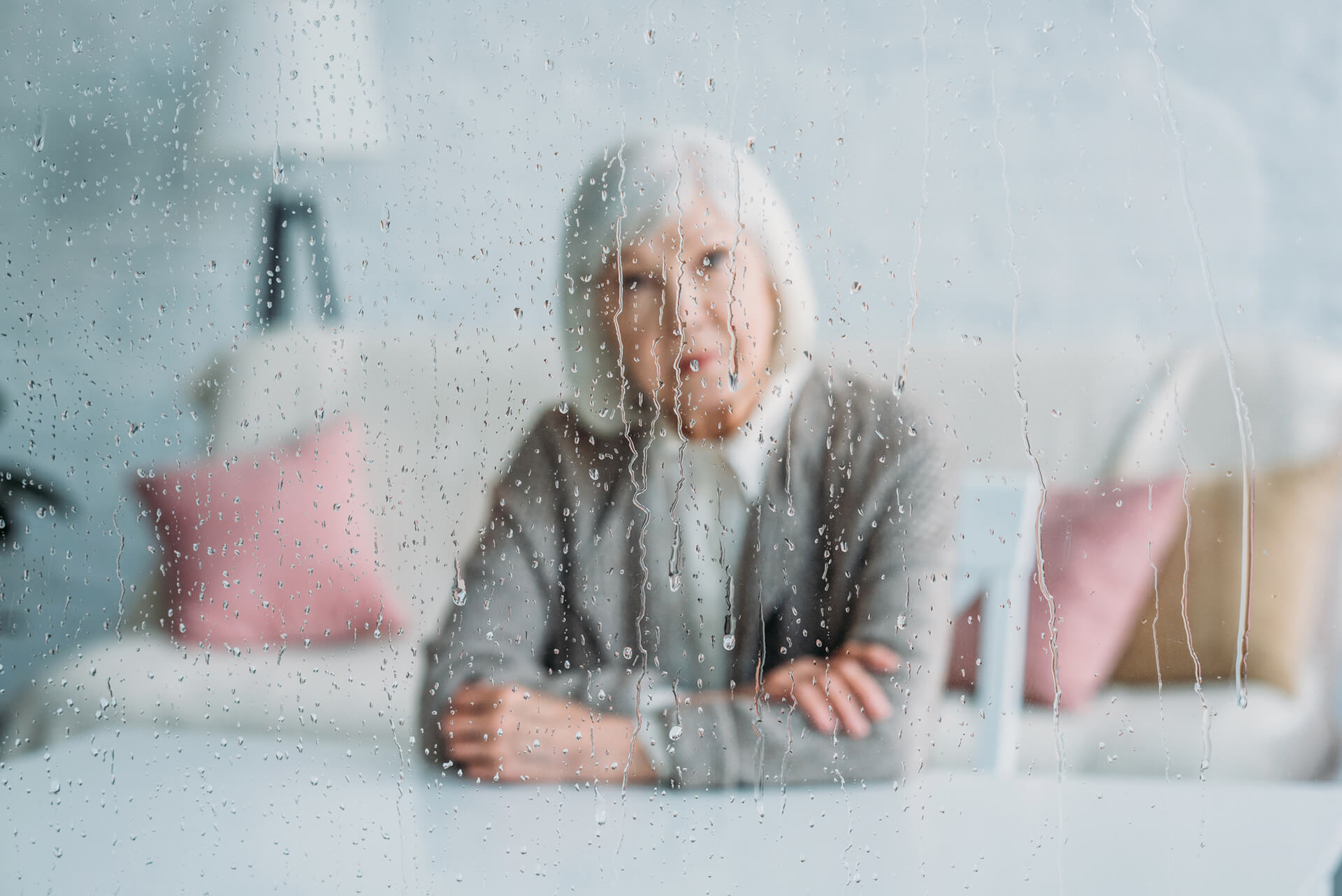My mother, aged 81, had a couple of errands and so I was driving her around Calgary. First, we went to her bank so she could deposit a check. Wanting to ensure she didn’t slip on the well-polished floor, I held her arm gently as she walked up to the teller. She greeted the teller good morning and said she had a check to deposit. The teller looked right over my mom’s head and asked me, “Which account does she want to put it into?” I was a bit shocked and confused. So I blurted out, “It’s her check and her accounts. Ask her.”
Next, I took my mom for her annual appointment with a cardiologist. After having examined her, he asked me how her current medications had been working for her. I said, “I don’t know. Let’s ask her.” After all, my mother was sitting right there.
Women are unfairly treated by society and in many industries. Sexism is a well-documented phenomenon. However,as they age, they also encounter ageism—they become invisible.
Scene 1: Gender Bias
We’ve known for some time about gender bias in many areas of society, including healthcare, finance and media.
Women’s health issues are often underestimated by medical professionals. Heart disease, autoimmune disease, and severe period pain are routinely dismissed as anxiety, depression, or just plain normal, causing women to suffer in silence. A study of nearly 30 million people found that women were “less likely to receive the medication treatment and monitoring recommended by clinical guidelines”.
In general, women avail of fewer financial services. They have fewer bank accounts, make fewer deposits, and have less life insurance. Loan officers tend to be biased against women applicants, resulting in women less likely to get a loan, and when they do get a loan, receive smaller amounts; interestingly, the women are less likely to default on their loans.
Examples of sexism abound not only in real-life, but in reel life. In the top grossing movies of 2018, only 35% of speaking characters were female.

Scene 2: Gender Bias + Age Bias
Now, on top of a gender bias, add an age bias. A global study across 18 countries and multiple dimensions found that, while aging is no picnic for either sex, elderly women are singularly disadvantaged.
Since women live longer than men, they have more interactions with the healthcare system. Unfortunately, the interactions are not all they should be. Ageism combined with sexism hampers diagnosis and treatment for elderly women. Another study’s title itself says it all: “Seen but not Heard: Elderly Women’s Experiences in the Hospital”. It found hospital care for elderly women sadly lacking, especially in the areas of bathing, mobility, nutrition, and not surprisingly, communication.
In financial services, elderly women face both gender bias and general financial ageism. They experience discrimination and exclusion because there are fewer physical bank branches and more online banking. They also have fewer and more expensive insurance options.
For women in cinema and the news, even 35 is considered old. A study of the top grossing movies from the 1940s through the 1980s found elderly women not only to be underrepresented (only 19% of characters over the age of 35 were women) but more negatively portrayed (unattractive, unfriendly, and unintelligent). Another study analyzed the top grossing movies of 2019 in France, Germany, the UK, and the US to find that of the characters that were 50+ years old, only some 25% were female and that there were no female leads in a single movie. The 2015 Global Media Monitoring Project studied the news arena to find “an inverse relationship between sex, age and visibility so that as a woman’s age increases, her visibility in the news decreases: a mere 20 per cent of all sources/subjects who were perceived as being over the age of 50 years were women.”
They are even ignored by the academic and research community. We don’t collect enough data on elderly women, or even women over 50. And in an age of data-driven policy making, that means they miss out on services. We don’t conduct sufficient clinical trials on elderly women. And that means the appropriate dosages for them or the possible side-effects on them are not known. We don’t have an accurate understanding of how common diseases affect women or how best to treat them. As an article in The Lancet article states:, “Most adults older than 85 years are women with unique health and social needs, but they comprise an invisible majority”. We know that women live longer than men, but, as one global meta-analysis reveals, they “live more years of their lives with functional limitations”, and they “score significantly lower on most indicators of subjective well-being and mental health”.
Scene 3: Fade to Gray
In essence, elderly women are invisible. They are not presented, acknowledged, studied, or listened to. And therefore, they suffer service inequities – be that in the area of healthcare, finance, or other industries. Among the elderly, women suffer greater exclusion from material resources and civic participation.
It’s not just the average elderly woman who faces discrimination. High-profile elderly women face discriminationas well. Mary Ann Sieghart’s must-read book The Authority Gap overflows with examples of high-ranking female leaders being repeatedly underestimated. In one, she tells of how the then Pope reached past Mary McAleese, the President of the Republic of Ireland, to first shake the hand of her husband (p.2). In another, she tells of how, at a White House reception, US President George Bush told Joseph Mulcahy that he was doing a great job at Xerox while it was actually his wife Anne Mulcahy who was CEO of Xerox and standing right beside him (p.69). The book mentions the then chair of the International Monetary Fund Christine Lagarde explaining how, when women board members begin to talk, people stop paying attention (p.66). Dame Mary Beard, professor of Classics at Cambridge University and well-known TV historian, has to gently chide people to let her have a chance to speak (p.65). Madeleine Albright, the former US Secretary of State, encouraged women to interrupt more in order to have their say (p.64).
Because of the tech revolution and then working from home during COVID, we’ve learned not to judge people by their clothes. The young guy or gal in the t-shirt, jeans, and hoodie may well be the entrepreneur of a startup worth millions – so you better acknowledge them, respect them, and give them good service. And yet, we continue to judge people by their gender and by their age. If you’re a woman and you’re elderly, you’re doubly discriminated against, underestimated and unseen.
By being ignored, elderly women lose out on what is rightfully theirs: to be seen and acknowledged and respected, to be heard, to be taken into consideration, and to avail fully of the resources and services due to them. We need to listen to them out of compassion, out of concern for their physical and social well-being, and out of a sense of what is their right.
By ignoring elderly women, we lose out on what they have to offer: their extensive experience, deep knowledge, non-judgemental perspective, unconditional empathy, and insightful wisdom. We need to listen to them selfishly for our own growth and well-being.
In Alfred Hitchcock’s 1938 film, The Lady Vanishes, the ‘lady’ who disappears is Miss Froy, an elderly woman who is overtly a governess and music teacher. But she is more than that; she is also a spy for the British Foreign Office. Thankfully, at the end of the movie, she reappears. A happy precedent.
The eldest of five children, my mom lost her father at an early age. She married, immigrated far from her native land to Canada, raised two children, worked a full-time job where she was admired for her intellect and ethics, managed an immaculate and friends-filled home, sang classical music on stage, contributed to a community where she was known for her open heart, and, for the last seven years, nursed her husband through cancer. Every elderly woman has her own story, her own trials, her own accomplishments. After all, they have lived a life.
Back home, my mom makes dinner, eats, washes the dishes, and takes her medications. Then, she sits down to relax and do some sudoku. She finishes one in 3 minutes – and I finish the same one in 5 minutes. “Don’t worry,” she says smiling gently. “You’ll get better with time.”
The views expressed in this article are the author’s own and do not necessarily reflect Fair Observer’s editorial policy.
For more than 10 years, Fair Observer has been free, fair and independent. No billionaire owns us, no advertisers control us. We are a reader-supported nonprofit. Unlike many other publications, we keep our content free for readers regardless of where they live or whether they can afford to pay. We have no paywalls and no ads.
In the post-truth era of fake news, echo chambers and filter bubbles, we publish a plurality of perspectives from around the world. Anyone can publish with us, but everyone goes through a rigorous editorial process. So, you get fact-checked, well-reasoned content instead of noise.
We publish 2,500+ voices from 90+ countries. We also conduct education and training programs
on subjects ranging from digital media and journalism to writing and critical thinking. This
doesn’t come cheap. Servers, editors, trainers and web developers cost
money.
Please consider supporting us on a regular basis as a recurring donor or a
sustaining member.
Support Fair Observer
We rely on your support for our independence, diversity and quality.
Will you support FO’s journalism?
We rely on your support for our independence, diversity and quality.






